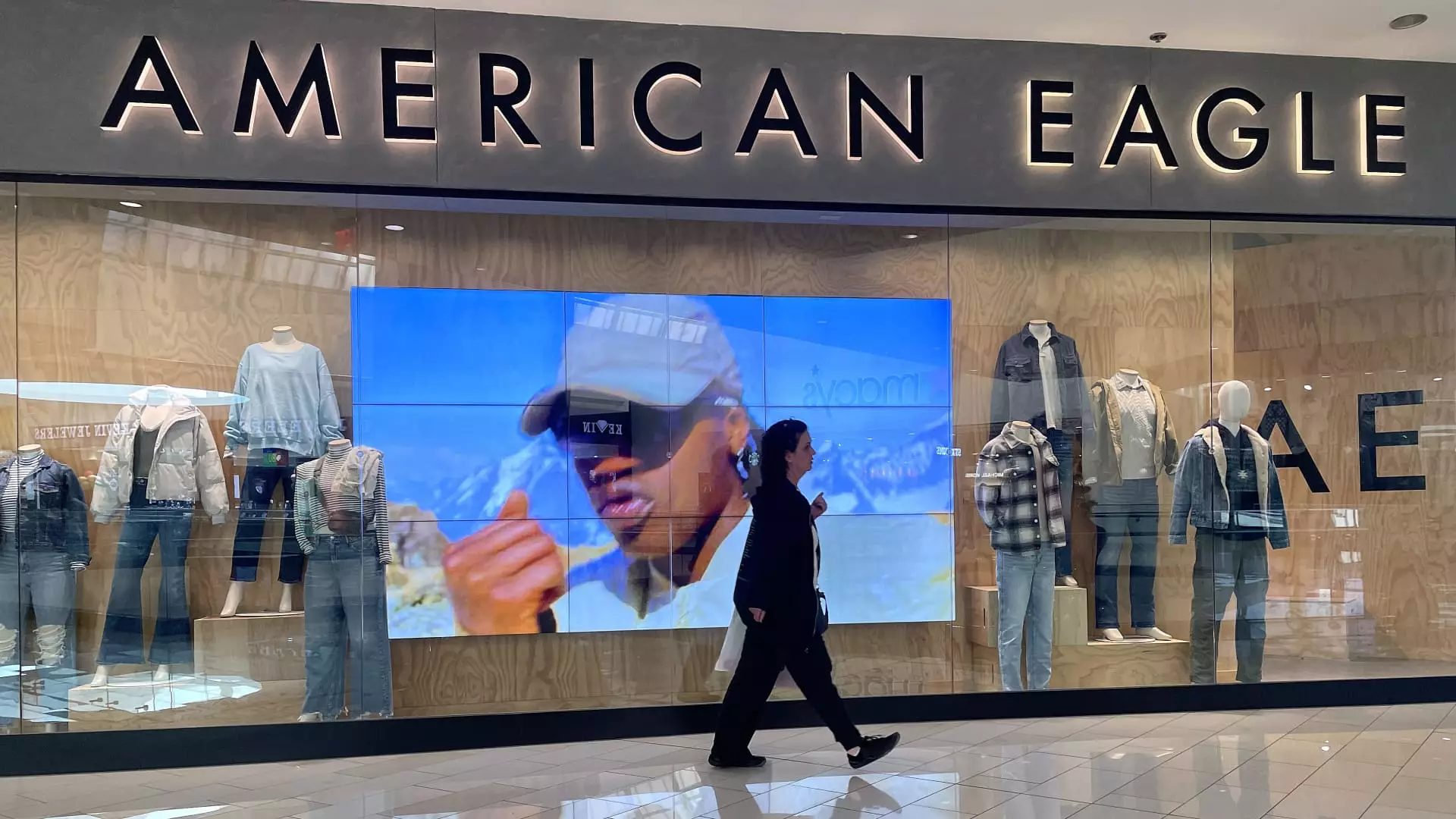American Eagle Outfitters, a prominent player in the retail apparel sector, found itself in a precarious position after publicizing its third-quarter earnings, which triggered a significant 13% decline in stock price during after-hours trading on Wednesday. This dramatic drop was attributed to the company’s less-than-optimistic holiday forecasts and a downward revision of its annual profit projections. Despite managing to surpass Wall Street’s earning expectations, the overall sentiment surrounding its sales performance tells a troubling story about the evolving landscape of retail and consumer behavior.
The financial figures presented by American Eagle revealed a mixed performance. The company’s adjusted earnings per share (EPS) came in at 48 cents, slightly exceeding the 46 cents anticipated by analysts. However, revenue of $1.29 billion fell short of the consensus estimate of $1.30 billion. The previous year’s third-quarter net income was also down, dropping from $96.7 million to $80 million, illustrating a decline of roughly 17%.
American Eagle’s recent earnings call highlighted a critical theme across the retail sector: consumers are increasingly becoming value-driven and selective about their spending patterns, mainly prioritizing expenditures during key shopping periods. This shift is evident in the company’s reports, noting that while they experienced success during the back-to-school shopping season, overall demand remained inconsistent. CEO Jay Schottenstein pointed to this inconsistency as a significant factor affecting sales projections for the upcoming holiday season.
In a retail environment characterized by fluctuating sales, American Eagle underlined the importance of strategic positioning for peak shopping periods. While the company offered promises of high-quality merchandise and a positive shopping experience, the reality is that these strategies might not be enough to drive sustained consumer engagement outside these key selling moments. The shared sentiments of similar retailers, such as Foot Locker and Dollar Tree, further highlight a concerning trend in the industry.
Adjusted Forecasts: Retreating Growth Expectations
In light of its third-quarter performance and the anticipated challenges ahead, American Eagle adjusted its sales projections for the holiday quarter, expecting comparable sales to rise by around 1% while estimating an overall sales decline of 4%. This lower-than-expected outlook is compounded by the effects of having one less selling week and a delayed influx of holiday shoppers, leading to a ripple effect on revenue expectations.
Full-year forecasts have similarly taken a hit, as American Eagle now anticipates an overall sales increase of just 1%, significantly below its previous guidance of 2% to 3%. With the revised expectation for comparable sales growth at 3%, slightly downward from earlier forecasts, the company’s financial outlook paints a picture fraught with caution amidst overarching economic uncertainties.
The broader retail environment has seen various players, including Abercrombie & Fitch and Dick’s Sporting Goods, changing their earlier cautious tones to reflect a more optimistic outlook following their earnings calls. In contrast, American Eagle’s management has taken a more tempered and hesitative approach. The comparison highlights the dichotomy within the retail market and raises questions about American Eagle’s strategic positioning moving forward.
However, it is noteworthy that despite facing overarching challenges, American Eagle is experiencing significant enthusiasm for its Aerie brand, which reported record earnings for the quarter, accompanied by a commendable growth rate of 5% in comparable sales. This positive development within their product lines may provide some respite as the company navigates a turbulent retail landscape.
American Eagle’s recent third-quarter performance underscores the rapid shifts in consumer behaviors and expectations within the retail sector. As value-seeking shoppers continue to dictate the pace of spending, American Eagle’s reliance on successful promotional periods may prove to be insufficient in stabilizing its financial health. With downwardly revised projections and a cautious outlook, the retailer faces a formidable task ahead to regain traction and investor confidence amid a complex market backdrop that demands agility and insight into customer preferences. Remaining focused on the strengths of its key brands will be essential as American Eagle endeavors to overcome these challenges and adapt to a changing consumer landscape.

